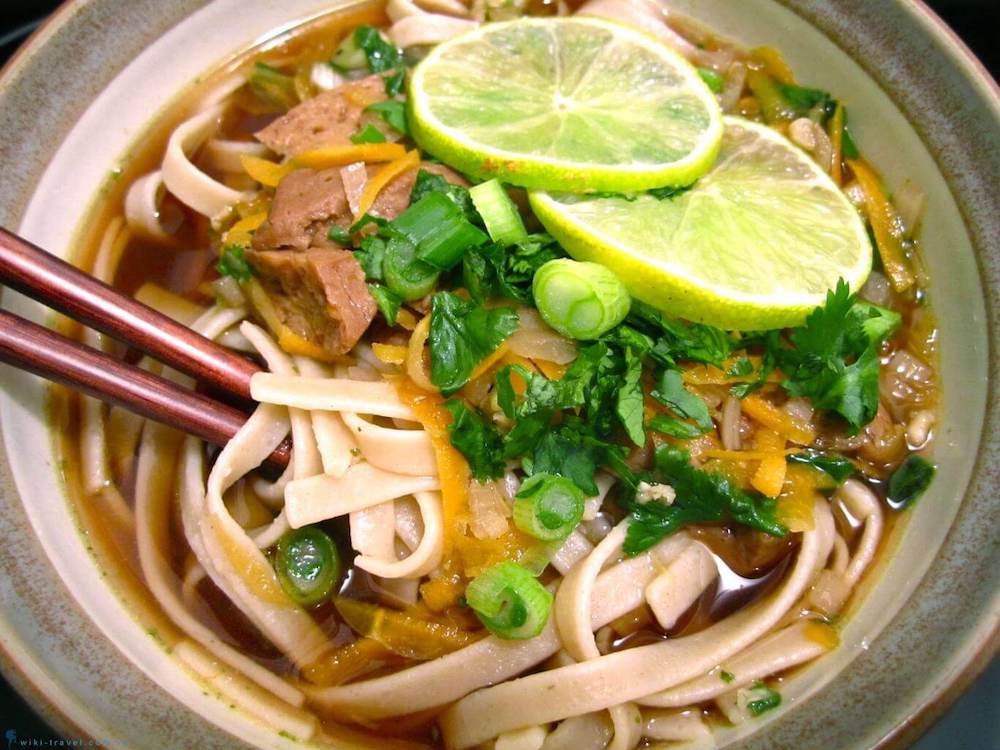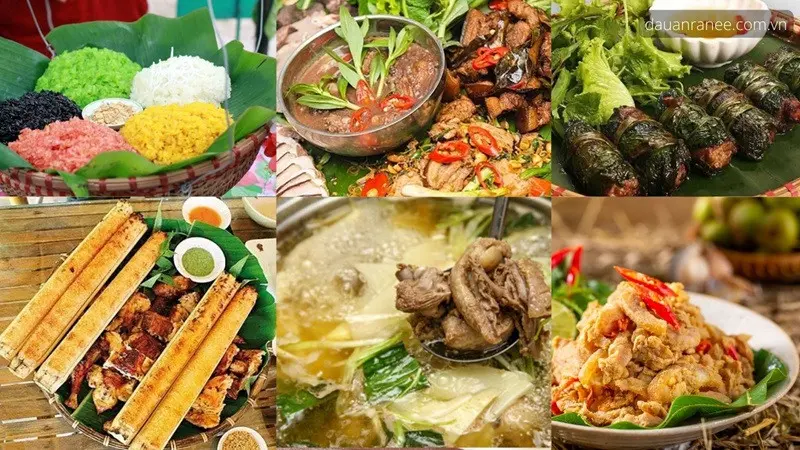What to Eat in Ha Giang? Explore the TOP 15 Unique Mountain Delicacies: From Thắng Cố, Ấu Tẩu Porridge to Sour Pho
Are you wondering "What to eat in Ha Giang?" This handbook will take you deep into the unique culinary world of the Northern mountains. We have compiled the TOP 15 "must-try" mountain specialties, from warming Thắng Cố, rustic Mèn Mén, to the famous Buckwheat Cake
Introduction
Ha Giang, the frontier land of Vietnam, is not only captivating to tourists with its winding mountain passes and romantic buckwheat flower fields but is also an immensely unique culinary treasure. The cuisine here is characterized by the convergence of various ethnic minorities such as the Mong, Tay, and Dao, creating dishes deeply infused with the breath of the mountains.
Are you planning to conquer the Stone Plateau and wondering "What to eat in Ha Giang?" This article is your essential food guide. We will compile and explore the TOP 15 most unique mountain specialties, from traditional, challenging dishes like Thắng Cố and Cháo Ấu Tẩu (Aconite Root Porridge) to the easy-to-enjoy Phở Chua Hà Giang (Ha Giang Sour Pho). After reading this article, you will be confident in listing your way to "eat up" Ha Giang with unforgettable flavor experiences!
Overview of Ha Giang Cuisine
What is Ha Giang cuisine? It is the result of the harsh climate of the rocky mountains and the creativity of the ethnic people in processing available local ingredients. The dishes here are not elaborate in appearance but are incredibly flavorful and often possess medicinal properties (like Cháo Ấu Tẩu). The food is typically made from key agricultural products like corn (Mèn Mén), sticky rice (Bánh chưng Gù), and livestock meat (Thắng Cố). Ha Giang cuisine is truly a story of cultural survival in the mountains of the Northeast.
The TOP 15 "Must-Try" Specialties in Ha Giang
This section delves into the list of the most important dishes, helping tourists easily plan their meals (detailed guide/solution).
1. Thắng Cố (Horse/Buffalo Stew):
This is a traditional dish of the Mong people, prepared from horse (or beef/buffalo) meat and organs, stewed for hours with various specific forest spices. It is typically enjoyed at ethnic markets in the highlands.
Suggested Addresses: Restaurants in the Dong Van or Meo Vac markets.
2. Cháo Ấu Tẩu (Aconite Root Porridge):
Made from the ấu tẩu tuber (a type of toxic tuber that requires careful processing) cooked with sticky rice and pork leg. This dish is believed to have curative effects, such as reducing fever and aiding in health recovery.
Note: Only consume this dish at reputable restaurants recommended by locals due to the sensitive nature of its preparation.
3. Phở Chua Hà Giang (Ha Giang Sour Pho):
A unique variation of Pho, featuring a light sweet and sour broth, served with char siu pork, Chinese sausage (lạp xưởng), roasted peanuts, and cucumber.
4. Bánh Tam Giác Mạch (Buckwheat Cake):
Made from the seeds of the Buckwheat flower – the symbol of Ha Giang. The cake is purplish-pink, slightly bland, nutty, and best eaten hot.
5. Mèn Mén (Steamed Ground Corn):
A daily staple of the Mong people, made from steamed ground corn, possessing a rich, nutty flavor, usually eaten with soup or Thắng Cố.
6. Thịt Trâu Gác Bếp (Smoked Buffalo Meat):
Buffalo meat marinated in traditional spices, hung over the kitchen fire to dry and smoke. It is a highly popular Ha Giang specialty to buy as a gift.
7. Bánh Cuốn Đồng Văn (Dong Van Steamed Rice Rolls):
Unlike rice rolls in the lowlands, the ones here are often served with a dipping sauce made from bone broth and served with Vietnamese sausage (chả giò).
(The remaining dishes in the TOP 15 include: Bánh Chưng Gù (Hunchback Sticky Rice Cake), Lạp Xưởng Khô (Dried Chinese Sausage), Rêu Đá Nướng (Grilled Stone Moss), Gà Đen Hầm Thuốc Bắc (Black Chicken Stewed with Chinese Herbs), Lợn Cắp Nách (Armpit-carried Pork), Thắng Dền (Sweet Glutinous Rice Balls), Rượu Ngô (Corn Wine), Cơm Lam (Bamboo-tube Rice))
Tips and Notes for Enjoying Ha Giang Cuisine
To ensure your culinary journey in Ha Giang is complete, you need to keep in mind a few important tips and practical experiences:
Eating Times: Many dishes are only available at specific times. For example, Thắng Cố is best enjoyed early in the morning at weekend markets.
Avoid the mistake of trying Cháo Ấu Tẩu carelessly: This dish can be toxic if not properly prepared. Only consume it at reputable establishments recommended by locals.
Authentic Pairing: Ha Giang dishes, especially Thắng Cố and Lạp Xưởng, are often enjoyed with corn wine (rượu ngô men lá). This is the secret to balancing the intense flavors.
Pricing: Prices in the mountainous regions are generally reasonable, but you should inquire about the cost before ordering specialty dishes like Black Chicken or Grilled Stone Moss.
Proposed Solutions and Services: Combined Food Tours
If you have limited time and want to experience the cuisine fully, joining combined food tours or enjoying meals at local homestays is an optimal solution.
Outstanding Advantages: Most Ha Giang tours include experiencing Thắng Cố and Phở Chua, helping you taste authentic dishes without the hassle of navigating or being overcharged.
How to Get Consultation: Contact reputable travel agencies specializing in Ha Giang tours to receive consultation on unique culinary stops.
Conclusion
In summary, the journey to discover the TOP 15 mountain specialties of Ha Giang is not just about eating; it is a wonderful way to understand the culture and people here. From the intense flavor of Thắng Cố to the nutty taste of Mèn Mén, each dish tells a unique story of the Stone Plateau.
If you are planning your trip and need a specific itinerary for "What to Eat in Ha Giang" or wish to join food exploration tours, contact us immediately to receive a detailed schedule and discover these mysterious flavors today!





main.comment_read_more